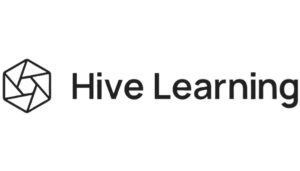HRD Roundtable Report: Setting Collaborative Practices that Drive Productivity and Support Better Employee Experiences
- 7 Min Read
Workplace productivity is no longer constrained by the parameters of the hours you’re visible in the office and for many, coming into the office feels chaotic, and often disorganised. We’re no longer phased by joining calls where some are in an office meeting room, others are dialling in from home, or co-working spaces, and some […]
- Event Types
- Date of Event: Feb 22, 2023


Workplace productivity is no longer constrained by the parameters of the hours you’re visible in the office and for many, coming into the office feels chaotic, and often disorganised. We’re no longer phased by joining calls where some are in an office meeting room, others are dialling in from home, or co-working spaces, and some even whilst on the move. Nonetheless, many HR and people leaders are becoming increasingly concerned with their employee experience during these collaborative touchpoints. Not only driven by the need to stamp out poor productivity habits, but to ensure they’re constructed to create opportunities for employees to foster their professional relationships, connect with their teams, and gain exposure to senior leaders to accelerate learning.
On Thursday 9th February 2023, HRD Connect hosted a group of senior HR and people leaders to discuss this topic in a virtual roundtable that was led by Belinda Gannaway, Director, FathomXP, supported by Nick Hedderman, Senior Director, Modern Work Business Group, Microsoft. The group explored the learned practice that not only fuel great collaborative engagements for employees, but experiences that also delight them. The session was conducted under Chatham House rules so while this write-up will highlight key discussion points and takeaways, all participants are anonymised.
The use of collaboration tools
Belinda opened the conversation by highlighting that collaboration is more about mindset than a toolset and discussed the impact of new technologies and employee experience platforms on collaboration. One participant pointed out that sometimes tools can be a hindrance to collaboration, especially when there are too many channels of communication. The solution proposed by this individual in their organisation was to bring everyone together and identify what was working and what was not working. They then agreed on some clear boundaries around communication, such as the tools they would use and meeting times. This helped to simplify the process and made collaboration easier.
Another roundtable attendee spoke about their experience with Microsoft Office, which her company had implemented globally before the pandemic. However, there was a sense of confusion with people using different channels in different regions, which created challenges for communication. Despite the challenges, the company recognised the importance of collaboration tools, especially for the work they were doing on sustainability and energy transition.
Overall, the group acknowledged the importance of setting clear boundaries and creating a sense of belonging for employees who are working in a distributed manner. The challenges faced by organisations in this new hybrid world are complex, but the solution lies in simplifying communication channels and fostering a culture of collaboration.
Challenges to collaboration
The participants discussed the difficulties they face in finding the right balance between virtual and face-to-face interactions, as well as the issue of overreliance on multiple tools and channels for document storage. They also talked about the confusion that arises from an overwhelming network of stakeholders, leading to mixed roles and responsibilities. One participant emphasised the importance of collaborating with the right people, at the right time and in the right way, and ensuring that all voices are heard equally to distribute power. The participants also discussed the issues of inconsistencies leading to duplication, knowledge sharing and learning, and workforce retention.
Another challenge that was mentioned was the issue of accessibility. One attendee who works for a charity highlighted the challenges they face in creating accessible guidance and ensuring that technology is accessible to everyone, especially those with a learning disability. This individual also mentioned that many of the support workers they work with are not comfortable with working on screens and feel that it takes them away from their primary goal of supporting people with a learning disability.
The group agreed that collaboration is not just about people working in offices but also about people working together in different ways at different collaboration points. The participants acknowledged the importance of considering the nature of collaborative working practices and understanding that collaboration is more than just working in an office.
Enforced collaboration in a hybrid world
The discussion then shifted to the topic of enforced collaboration, specifically in terms of having compulsory in-person meetings in the office on a weekly or monthly basis. The group acknowledged the importance of having clear value and purpose for these meetings, so that individuals do not feel like they are wasting their time. The idea of “moments that matter” was introduced, where individuals would only be required to come together in person for important meetings or events. The team noted the importance of having a flexible and agile approach, as different teams may have different needs for in-person collaboration. For example, creative teams may need to touch and feel the product, whereas business support functions may be able to collaborate effectively through digital means.
To ensure that these in-person meetings are effective and inclusive, one participant shared that they created guidelines and principles with input from HR, internal comms, and stakeholders from across the business. These principles were co-created and were based on personas from different functions within the business.
The group then highlighted that while enforced collaboration can be valuable for certain teams, it is important to strike a balance between too much structure and too little freedom. Organisations should strive to find the “sweet spot” where learning by doing, and collaboration can coexist in a productive and meaningful way. By understanding the needs of each team and creating principles and guidelines that are tailored to those needs, organisations can foster a culture of learning, growth, and collaboration.
Productivity & work habits
The discussion then focused on the productivity and work habits of employees in a remote or hybrid work environment. Nick Hedderman, Senior Director, Modern Work Business Group, Microsoft shared that based on anonymous signals collected from hundreds of millions of users of the Microsoft 365 suite, including Outlook and Teams, there has been an average of 42 minutes of increased work time per day. This has been attributed to the elimination of commuting time.
However, there were differing perspectives on what productivity means. While some believe that increased work time equates to improved productivity, others question the quality and output of the work being done. They also raised the issue of burnout, as 40% of employees reported feeling overworked.
One participant raised the point that people might be traveling into the office outside of peak hours and working longer hours, but the science behind increased productivity is still unclear. The question of whether the feel-good factor or human connection is responsible for increased productivity was also raised.
Another participant mentioned the Work Trend Index, which found that employees were facing challenges in adapting to a hybrid work environment. Managers were facing difficulties in managing remote workers, and employees were reporting burnout from the added responsibilities. The loss of visual cues, such as those provided by being in close proximity to managers, was also mentioned as a factor affecting productivity.
The group discussed the impact of products being rolled out by Microsoft, in terms of how they can help the productivity of an organisation. They touched upon the challenge of the switch-off of some functionalities within Microsoft’s products and how some of the organisation might not realise that the functionality that may not be in demand now, could become useful later.
Measuring productivity
The discussion also touched upon the question of measuring productivity, and there was a need to define what productivity means, what it would be implemented, and what the outcomes would be. The role of technology was also discussed in terms of realising its potential.
One participant made a comment on the importance of having good data to understand the productivity equation in an organisation. He encouraged organisations to work closely with their IT departments to extract the existing content that they have and use it as the basis for experimentation. He also mentioned that if there isn’t a full suite of data, organisations should focus on a few key metrics to understand more about productivity.
For more information visit: Employee Experience and Engagement | Microsoft Viva








